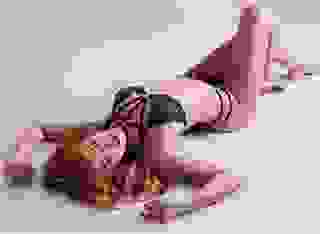- How To
- How to Develop a Good Story 01
Note: You can change font size, font face, and turn on dark mode by clicking the "A" icon tab in the Story Info Box.
You can temporarily switch back to a Classic Literotica® experience during our ongoing public Beta testing. Please consider leaving feedback on issues you experience or suggest improvements.
Click hereSexual Content - The material content uses sexually explicit examples by individuals over eighteen-years-of-age regarding the writing models addressed. The scenes are: male/female, consensual, and involve heterosexual intercourse. The stories referenced may contain additional sexual activities, but are not quoted here as examples.
My thanks to kenjsato, an available Literotica editor, for his prompt and very helpful editing assistance in preparing this 'How To ...' article for Literotica.
My intent for this article is to assist writers in polishing their writings, captivating readers, and bringing praise to the author for their writing efforts, such as these comments:
"Loved the story between he and the sexy student, but there is just something in the last sentence that grabs this old 83 year old heart. I still have my sweet thing with me. Married now 60 years. I hugged her tighter last night after this story."
I have a new role model! The time I spent reading this was worthwhile.
Thank You!
It's sad and it's sweet... I enjoyed your story, and plan to read more of your work. I hope you continue sharing your talent with us. Thanks!
INTRODUCTION
This article is written as a writing primer to help Literotican authors develop their stories through a thoughtful and proven approach. Numerous experts in the field of writing, over decades, have tested it and recommend the approach as a model for reducing editing time on task as well. Using it as a guide, will assist writers in crafting the basic structure of a storyline. This article offers advice on what professional editors and writers have found to work for them across varied styles of writing -- from manuscripts, short stories, and novels to Literotica's erotic works. The provided information will help writers hook readers into coming back for their well-crafted stories. This primer is a good starting point for budding authors and a refresher course for intermediate writers.
The primary focus of this article is on structured writing, although it touches on the stream of conscious writing technique as well, to some extent. I write about and provide story excerpts to illustrate the concepts and elements of a good story structure including descriptive writing.
Your desire and intent to communicate does guide your will to write. As a writer of short stories or novels, your goal should be to provide your readers with a well-crafted story. One that draws them into the intriguing plot line via their attraction to the characters and the situations in which those characters find themselves. The outcomes of those interactions must flow logically through any twists or turns in the plot right through the resolution of the story. Bearing in mind, that not all resolutions necessarily have successful conclusions.
Without a desire to communicate, you have no bridge between your inner thoughts and the rest of the world around you. It takes bravery to take that next step and publish. It is the baring of your conscience to unknown souls: the merciful few who encourage you, and the occasional handful who enjoy flagellating your flesh while they hide behind 'anonymous.' That protective tag line they are afforded in the box beneath your request for commentary regarding your masterpiece! Of course, you could just turn that Literotica commentary box off -- but, then you aren't open to communication, are you?
For the sake of this missive, I'll take a leap of faith and say that you are open to suggestions and are at the point of submitting a story to Literotica. Are there suggestions that could help you, encourage you even, to not just hover over the submit button, but to hit that submission button with confidence?
The right hand that hovers there as you hesitate and ask yourself, 'Is this my best effort? Will my writing, birthed in toil and sweat, be acceptable? Can I take the commentary?'
Wait! I didn't say hit 'submit' yet!
Let's go back to the beginning and make sure you have given it your best effort! How about a review from a writing perspective BEFORE you start that masterpiece or even if it is done, then a critical eye's view of it?
At its rudimentary level, stories generally have three basic parts: a beginning, a middle, and a conclusion; or resolution. Novel writing has more components; therefore, that's a topic for another missive.
If you are reading this and have not started writing -- lucky you!
I believe this article will help you through that process. If you have started, or are at the end of your work and haven't hit the submit button, then let's look at your work. Even, if it's already finished -- lucky you, too!
Robert Lee Brewer's blog https://www.writersdigest.com/getting-published/what-is-a-pantser-in-writing speaks of two types of writers using a catchy set of terms that I came across: 'pantsers' and 'plotters.'
The 'pantsers,' he says, are writers that write by "...the seat of their pants." a free form of writing. While 'plotters' approach story or novel writings in a more structured approach using mapping techniques to flush out the story and characters. Both are valid approaches that apply to short story creations as well. When I first started writing those terms were known as 'stream of consciousness writing' and 'mapping.' In this missive I lean toward the plotters, especially for most of us as neophytes or beginners. Its approach is like spreading oil on the waters to help calm the writing jitters a bit.
WRITING FROM A 'PLOTTER'S PERSPECTIVE'-- A Mapping Exercise
1. Did you write an outline? Good!
2. Does it have the three basic parts? You did check for continuity among them, right?
3. Did you interview your characters for their roles in your story? Hum, ... What's that? Didn't hear you say you held auditions to see if they really qualified for a part in your story!
If the answers to any of those questions are 'no.' Hold off on hitting that Literotica 'submit button!'
Master writers and master teachers of writing highly encourage the use of outlining your story or masterpiece. It is a writer's aid to reigning in wayward spin-off themes or actions that are not relevant to the main theme.
Then, perhaps more importantly, are the qualifications of your characters. Those are critical in gaining acceptance of your brainchild by your readers. It's critical that you spend the time and energy to make your story people as real as the persons with whom you share dinner. A reader should be able to turn the page and be damn surprised that the character is able to crawl out of your storyline and sit next to them--explaining what transpires, as the reader fully engages your well-crafted journey to the point of resolution.
First, let's tackle the easier of the two -- the outline. Later we will address the more difficult one -- the characters' development.
WHY AN OUTLINE?
For starters, few writers, even seasoned ones, are capable of spontaneously crafting a story that stays on task and flows well from beginning to end without adding serious post-draft editing time. If you have already dabbled in writing, you probably know how difficult it is to chop off even one participle from something you toiled over so laboriously! Even if you find the story has lost traction or spun off the primary theme and down a rabbit hole, you are going to be reluctant to reach down that hole and pull it back out!
Using an outline, will help reduce post editing time, according to the experts; almost all of them! [That means less reaching into the hole and grasping the furry critter by its ears and yanking him back into the correct part of the story--or possibly, just covering the hole and leaving him to his demise entirely! The latter would be a true waste of your time.]
PERSPECTIVES ON OUTLINES
1. Professional writing coaches encourage you to develop a plot line, beginning, middle, and ending -- that sketching out of the setting and character introduction, the flushing out of how the plot develops, and finally, how it gets resolved; also known as the conclusion.
2. Having an outline gives you a bird's eye view of your story. You have a road map to follow. At least you know at the onset, you have the three key components in place. It steers your story and keeps it from wandering off into the wilderness and finding readers closing out of it before they reach your wonderful ending.
3. Certainly, you can modify and change those elements as your story evolves. They are not set in stone--unless you say so!
4. Prepare the outline -- no matter how simple -- and you have a road map to what generations of readers expect from a good story. That road map has three components:
a. an intriguing beginning,
b. a well-thought-out plot, and
c. a resolution or closure that emotionally satisfies the reader
5. Outlining your story to reach a logical resolution will tie all the elements together; from beginning to end. It is your road map without having to peer in the rearview mirrors to see what you missed along the way in developing your storyline.
Emily Wilson, a writing specialist with Scribendi Inc., a Canadian publishing company, describes writing quite well in her article entitled, '5 Healthy Writing Habits (For Less Stress and Better Writing). She writes, "In many ways, writing is more like being a wilderness guide than a reclusive creative genius. As a writer, it's your responsibility to guide your reader through your text. Moreover, depending on who your reader is, you must design a route that is either well-reasoned and orderly or laden with carefully constructed twists, turns, and compelling mysteries."
In other words Literotica writer, you are the tour guide on your story's road map and it's your job to make sure the readers arrive safely and are comfortably entertained at the end of your tale. Not scratching their heads and wondering what the ... was that all about ... or who was doing what to whom?
I wrote and published my first novel here on Literotica. It took four weeks of time to piece together the storyline and define all the components. Another three months of a labor of love in writing the first draft of that tome. Longer still to edit it, until it reached the point that I felt it was my best effort.
I had an anonymous commenter write, "Long and... stupid! Quantity and skill with putting words together do not justify reading a 21 page story about dribble." A counter comment to that critique said it was wonderful and I shouldn't change a thing!
Who is right? The answer -- it may surprise you -- is that the correct answer lies in the writer's choice. You, as the writer, have the choice to accept either; or neither, and discard both knowing that in your own mind you submitted your best effort to your personal satisfaction standards. You wrote this story for your own satisfaction first and decided to share it with others for their enjoyment as a secondary consideration.
[Writer's note: A WicKed Metamorphosis is 181 pages in Microsoft Word covering about 74,500 words -- 21 Literotica pages. If you write here on Literotica you will come across such comments occasionally. If you believe you gave it due diligence, then you can move on; knowing not everyone enjoys the taste of your tea. Note: that novel is currently wearing a lip-stick red 'HOT' tag and is rated at 4.6 by readers. Not too bad for my first novel effort.]
Ms. Wilson goes on to say, "If you don't know where you're going, you cannot guide someone else there effectively (let alone do it with style). Outlines force you to always keep your destination in mind, ... with an outline in mind [it] increases your chances of enjoying a stress-free writing process and encourages you to be clearer and more concise in your writing."
Now, that's a real truism! Although, I wouldn't say that your actual writing would be stress-free, altogether.
THE OUTLINE IS HALF THE ANGST-- You still have more to go!
Having the basic three parts of a story outlined is half the mental stress!
Once you can see your carefully outlined pathway through the forest to the meadows beyond, you are halfway to your goal. The high-level cognitive gymnastics you jumped through to build the three stages will be well worth it. You will have just jumped through eight functions that your brain uses: thinking, listening, learning; to understand, justify, question, and pay close attention. Talk about stress!
Now, with your abbreviated notes on how you want the story to unfold, you can begin addressing the details. It's time to look at the individual elements of the outline and the aspects of good story writing each contains.
THE BEGINNING OF A STORY -- Opening Storyline, Setting, and Character Development
One tip, blogger Rachel Kramer Bussel offers in '5 Writing Tips for Getting Your Erotic Short Stories Published in Anthologies' is to make, "... your story stand out with a bang ... or using an attention-getting writing style ... or sexual practice or type of sex toy that most people know nothing or very little about." As an editor for the anthologies she publishes, she encourages writers "... to differentiate their story from all the others ..."
Create 'a hook' that catches and draws your reader immediately into the story. Spend the time to carefully craft an opening to your story and it is less likely that a reader peruses a couple of paragraphs and goes off in search of a more entertaining story among the thousands of other Literotica submissions. If you didn't create an outline and your hook gets placed at the middle or end of the story -- well you know what happens! You may just have lost a potential reader of your other creations down the road. Not to mention the current one that the reader quickly exited for lack of finding a good hook!
Set the hook well enough and they are drawn into your story; becoming captivated by it. It's likely they may 'favor it' and be more likely to 'follow you' as your writing progresses. You have them waiting, holding their collective breaths, for the next story knowing your work is well differentiated from the run-of-the mill stories on Literotica. Caring writers use their previous works as learning tools to improve their future works.
[My apologies to those who read this and feel I'm shaming their Literotica published work -- that's not my intention. I'm certain that much of what is published on this site didn't get the scrutiny of the type I am putting forth in this missive. Writing is always an evolving and learning process toward improvement! Like a doctor's practice and diagnoses; they get better with experience and a keen eye to editing the next one using more scrutiny that the last story!]
The first story I chose to illustrate the elements of writing that are addressed in this article is from my only entry, as of November 1, 2021, in satire/humor; a sparse reading area of Literotica. It posted on September 30th, 2021. By October 31st, it has been viewed 2.9K times; and scores 4.68 by 269 raters. In one month, almost 3,000 people viewed my story -- not to say they all read it. Some may have found it not to be their cup of tea; but 269 of them must have -- they rated it, nicely for me!
The planning time on task took about five hours including: the beginning, the plot, and the conclusion. That time included the incubation period to figure out the characters, their motives, what the plot would be and how I wanted the characters to engage with one another. It was not done in one five hour block. It was 'chunked out time periods.' Spread out over a day of 'incubation on storyline development and mapping.'
Once the outline was drafted then the total time spent in writing the first draft was about ten days' time on task -- three to four hours per day. Final draft, before I hit the publish button -- two more days of combing for errors, polishing dialog, and transition alignments! The story consists of 17,500 words -- 37 MS Word pages. Yet, there are still a few mistakes in it after publishing!
This is my opening hook to 'Life is Like Shit -- Not Chocolate,' about a guy down on his luck. It took about an hour of keyboard time to structure this brief opening:
The music was thumping out of that old jukebox in the corner, but nobody was dancing to my bucket of quarters. Who does that at 5:30 when the joint is half full or half empty; depending on how you look at it? The music was just some noise to drown out my errant thoughts of suffering grief. Most guys in here are on their way home to a house full of kids and a flagging, loving woman caught up with rug rat chores at the wind-down of a long day. They just needed a mug of courage to make it all the way home.
Me? Just chilling after a hard day's labor; before starting my second job of the day. No one is waiting for me to come home to kiss or to hug. I'm just sitting on my favorite stool covered in house construction sawdust and looking pretty much like a weary old man - 'cept I'm not old; just weary.
My best bartender friend was just wiping up some spilt beer at MY end of the bar. The corner that still needed a sign saying, 'Commiserating Corners - Open for Business.' At least that was the one I thought about hanging up there today. This is my corner. My stool. My time of the evening to unwind. Tomorrow, well there could be a different sign, but just now this one fits my mood just fine. Everyone here has a spot, even though there's no name tag on it. Like cattle lining up at the evening feed trough for grain -- each of us has our own place to suck down some suds before calling it a day. Don't take a man's place at the trough if you're new here -- that just ain't right.
This opening begins in Danny's own voice as he tells his story. Alludes to something that has happened to put him in this situation. Gives us a glimpse of his social status as a construction worker. A barstool loner. By the third paragraph I suspect several readers were asking themselves: Who is this grieving guy and why is he suffering? Why isn't there anyone at home to hug or kiss? Why is the weary, young, lonely fellow looking for someone to commiserate with him?
Everybody knows somebody like this! I think the opening created an empathetic hook in some readers right away -- just with a few brush strokes.
The setting is the place in your outline to introduce the main character(s). Sketch out her or his chief characteristics along with the cohorts -- wanton, bubbly, brutish, and some physical aspects so that readers can begin to identify with the characters once you begin to develop the plot. At least indicate the primary character's personality traits in your notes as you flush out your introduction. Paint a clear picture of the background for the storyline. Sketch these into your outline as well with some descriptive terms so readers get a sense that the setting is real; at least real enough to believe it could be visited!
TadOverdon, a Literotica Guru, in a forum discussion addresses characters saying, "I usually have a pretty clear image of my major female characters, and then I'll go look for visual material like pictures of actors or porn performers that fit the image.
"They're never ideal matches, naturally, but that's not the point. Often, it's a matter of someone having the right expression or physical attitude. Sometimes it's hair color and age. Physical type, eye color and so on are less important. But it does help to have an image to "pin" to."








